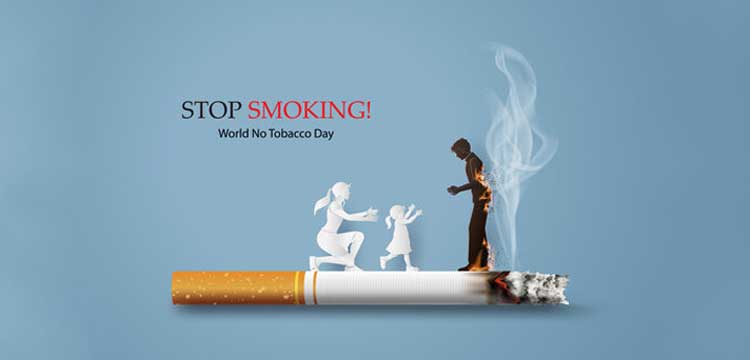Every year on May 31st, the World Health Organisation (WHO) observes World No Tobacco Day to raise awareness about the risks associated with tobacco consumption and its products. Tobacco use is a leading cause of various cancers, including lung, larynx, mouth, oesophagus, throat, bladder, kidney, liver, stomach, pancreas, colon, and cervix cancers, as well as acute myeloid leukaemia.
According to estimates, tobacco consumption claims over 1 crore lives annually. The impact of tobacco extends beyond health, severely affecting the environment in multiple ways and harming families and society as a whole.
Theme
The theme for World No Tobacco Day 2025 is “Bright products. Dark intentions. Unmasking the Appeal,” which aims to expose the concealed dangers of tobacco products that come in attractive flavours and packaging. According to the WHO, the tobacco and nicotine industries employ manipulative tactics to lure a new generation of users and retain existing ones, prioritising profits over public health. The WHO emphasises the need to keep the industry accountable, highlighting its shameless exploitation of children for financial gain.
“Shameless manipulation of our children, for industry profit. Every day, the tobacco and nicotine industries use carefully engineered products and deceptive tactics to hook a new generation of users and keep existing ones. Keep the industry out,” mentions the WHO website.
History
In 1987, the World Health Organisation’s member states initiated World No Tobacco Day to highlight the severe impact of tobacco use on global public health. Initially, April 7, 1988, was declared World No-Smoking Day through Resolution WHA40.38. However, in 1988, the World Health Assembly passed Resolution WHA42.19, designating May 31 as the annual World No Tobacco Day.
Significance
World No Tobacco Day plays a crucial role in highlighting the dangers of tobacco consumption, a leading cause of preventable deaths globally. By raising awareness, individuals can better understand the risks associated with tobacco use and make informed choices. This day also serves as a platform for health organisations and advocates to advocate for stricter tobacco control policies. Additionally, it provides resources and support for those looking to quit smoking, empowering them to overcome addiction and lead healthier lives.
The Devastating Health Impacts Of Tobacco Consumption
Smoking and tobacco consumption have severe health implications, affecting various aspects of an individual’s well-being. One of the most significant risks associated with tobacco use is the development of cancer. Smoking increases the risk of lung cancer and is also linked to cancers of the mouth, throat, oesophagus, stomach, pancreas, kidney, bladder, and cervix.
Cardiovascular and Respiratory Consequences: Tobacco consumption also has a profound impact on cardiovascular health, increasing the risk of heart attacks, strokes, and high blood pressure. Furthermore, smoking can lead to chronic respiratory diseases, such as chronic obstructive pulmonary disease (COPD), which encompasses chronic bronchitis and emphysema. Asthma symptoms can also be exacerbated, and lung function can be significantly reduced.
Other Health Problems and Secondhand Smoke Risks: In addition to these major health risks, smoking and tobacco consumption can cause a range of other problems, including gum disease, tooth loss, eye problems like cataracts and age-related macular degeneration, and infertility in both men and women. Tobacco use can also weaken the immune system, making the body more susceptible to infections. Moreover, non-smokers exposed to secondhand smoke are at increased risk of developing smoking-related illnesses, highlighting the need for smoke-free environments.
Quitting: A Path to Better Health
Quitting smoking and tobacco consumption can significantly reduce the risk of developing these health problems, emphasising the importance of cessation efforts and tobacco control policies. By understanding the risks associated with tobacco use, individuals can make informed decisions about their health and take steps towards a healthier, smoke-free life.
Globally, about 35 lakh hectares of land are used for tobacco farming each year. This practice contributes to significant environmental degradation, with an estimated 200,000 hectares of land deforested annually. Tobacco farming has a disproportionately severe impact on ecosystems due to its tendency to accelerate desertification and deplete soil fertility. The heavy reliance on chemical fertilisers and pesticides in tobacco cultivation not only harms the soil but also reduces its potential for growing other essential food crops, exacerbating the environmental toll of this agricultural activity.



















